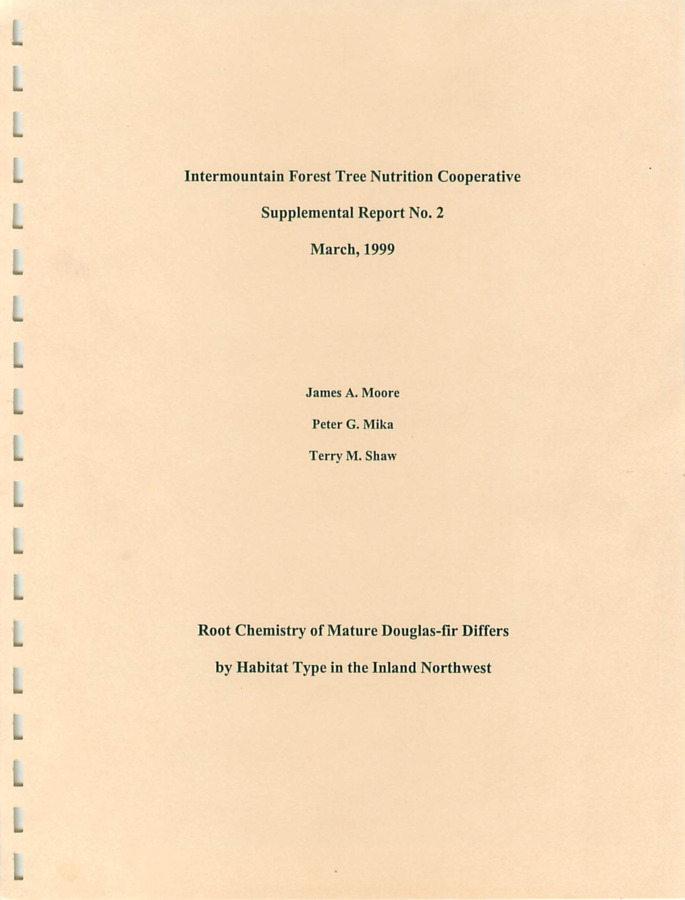PDF
Root Chemistry of Mature Douglas-fir Differs by Habitat Type in the Inland Northwest Item Info
- Title:
- Root Chemistry of Mature Douglas-fir Differs by Habitat Type in the Inland Northwest
- Creator:
- Moore, J.A.; Mika, P.G.; Shaw, T.M.
- Date Created (ISO Standard):
- 1999-03-01
- Description:
- This paper describes root biochemical characteristics of naturally regenerated Douglas-fir trees growing on a wide variety of sites in the inland Northwest. Roots of trees growing on dry, warm Douglas-fir habitat series had significantly greater concentrations of sugar and tannins, higher tannin/suagar ratios, and significantly lower phenolic concentrations and phenolic/sugar ratios than the roots of Douglas-fir trees growing on grand fir habitat series or western red cedar habitat series. Possible links between Douglas-fir root biochemical characteristics and susceptibility to root disease, particularly Armillaria, and tree resistance to drought are discussed.
- Subjects:
- research roots (plant components) statistics
- Source:
- Moore, J.A., P.G. Mika, T.M. Shaw, 1999. IFTNC Supplemental Report No. 2, Root Chemistry of Mature Douglas-fir Differs by Habitat Type in the Inland Northwest. IFTNC, FWR, Univ. of Idaho, Moscow.
- Source Identifier:
- Root_Chemistry_of_Mature_Douglas-fir_Differs_by_Habitat_Type_Inland_NW_IFTNC_1999
- Type:
- Text
- Format:
- application/pdf
Source
- Preferred Citation:
- "Root Chemistry of Mature Douglas-fir Differs by Habitat Type in the Inland Northwest", Intermountain Forestry Cooperative, University of Idaho Library Digital Collections, https://www.lib.uidaho.edu/digital/iftnc/items/iftnc4815.html
Rights
- Rights:
- This document is provided by the University of Idaho Library for use by University of Idaho students, staff, and faculty. All rights to the document linked from this metadata belong to the author, rights holder, and/or provider. For more information contact The Intermountain Forestry Cooperative, https://www.uidaho.edu/cnr/ifc
- Standardized Rights:
- http://rightsstatements.org/vocab/InC-EDU/1.0/

